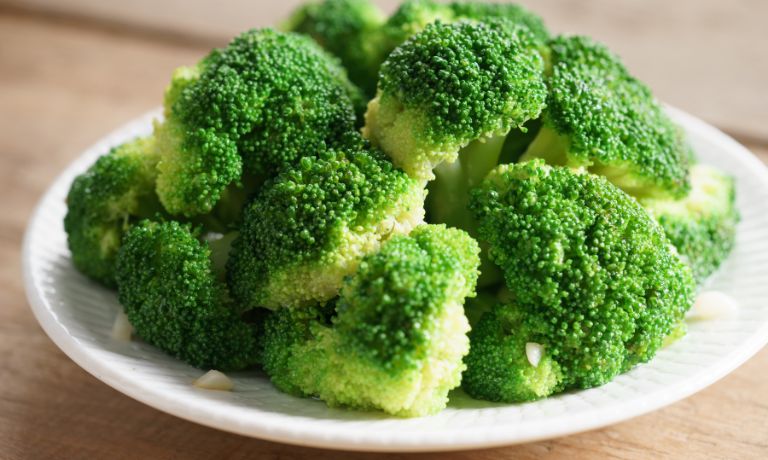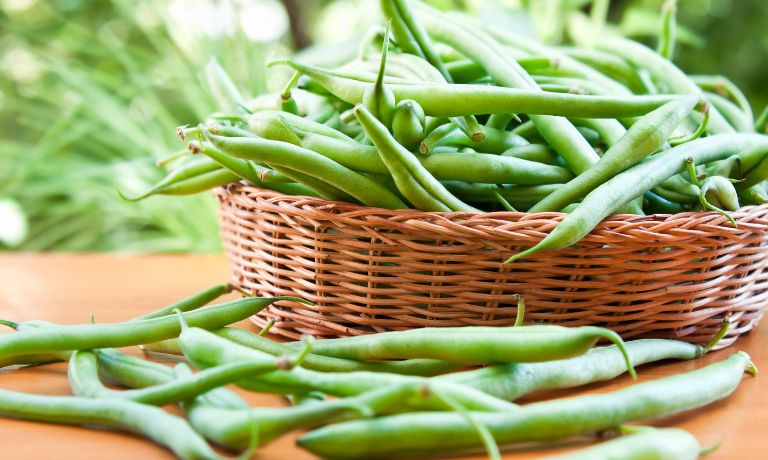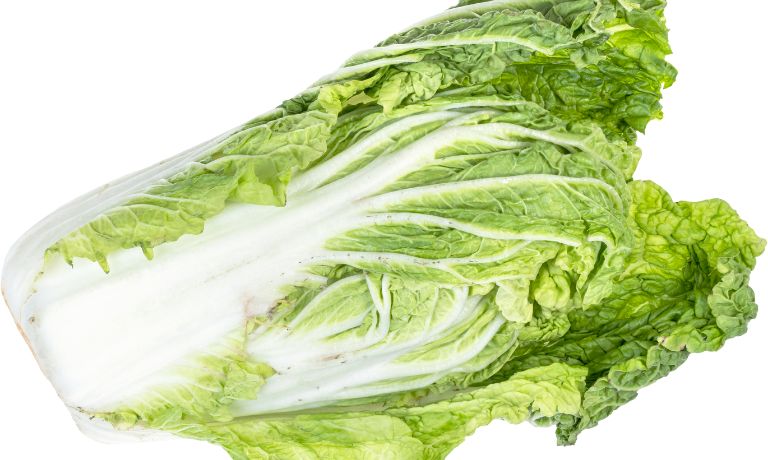Are you looking for a tasty substitute for Brussel Sprouts?
If so, then look no further! You don’t need to feel limited or restricted in your meal prep because plenty of delicious alternatives boast nutrition and flavor.
Read on to learn more about these ingredients and discover how they make a great replacement.
What Are Brussel Sprouts?
Brussel sprouts are small, round vegetables that belong to the Brassica family of vegetables, which includes other cruciferous vegetables such as cabbage and cauliflower.
They have a slightly bitter flavor when raw but become sweet and nutty when cooked.
Brussel sprouts are typically cooked by boiling or steaming them before adding seasonings like salt, pepper, and butter.
They can also be roasted in the oven with various herbs and spices for an even more flavorful dish.
Brussel sprouts pair well with many other vegetables and meats like bacon or sausage and are often used in salads or side dishes.
Additionally, they can be shredded to make a delicious slaw or added to soups, stews, and casseroles for extra flavor and texture.
With their versatility and nutrition-packed punch, Brussel sprouts are a great choice to add to any meal for extra crunch and flavor!

Substitutes For Brussel Sprouts
Plenty of other vegetables can make a great side dish if you’re looking for a substitute for Brussel Sprouts.
Broccoli
Broccoli is a cruciferous vegetable that resembles cauliflower but has smaller flower heads.
It’s green in color and its taste is slightly sweet and nutty.
Broccoli has been found to have many health benefits, including being high in vitamins A, C, and K, as well as dietary fiber.
Additionally, broccoli is more widely available and much easier to cook than Brussels sprouts, making it a great substitution option.
Broccoli can also be used as a side dish or in salads for added flavor and nutrition.
Ultimately, choosing broccoli or Brussels sprouts will depend on your taste preference and the type of dish you are preparing.
However, either vegetable is a great source of nutrition and can be used interchangeably in many recipes.

Kale
Kale is a leafy green vegetable that belongs to the same family as broccoli and cabbage.
It has a mild, earthy flavor that can be enjoyed in many dishes.
Kale has become increasingly popular due to its nutrient-dense profile, containing high amounts of vitamins A, C, and K and minerals, fiber, and antioxidants.
Kale also has a slightly bitter flavor that can be balanced by adding other ingredients.
It cooks quickly, meaning it can be added to stir-fries or salads without pre-cooking it.
Kale can also be roasted in the oven for a crispy, crunchy texture.
Unlike Brussel Sprouts, Kale does not require a long cooking time, so it is ideal for dishes where a quick preparation time is desired.
It can also add flavor and texture to soups due to its high nutrient content.

Cauliflower
Cauliflower is a cool-season vegetable that has become increasingly popular due to its versatility and health benefits.
It belongs to the same family as broccoli, kale, and Brussels sprouts.
Unlike Brussels sprouts, cauliflower is not typically eaten raw; it’s cooked or served as an ingredient in other dishes.
Cauliflower can be boiled, steamed, roasted, or eaten raw with dips or dressings.
It can also be mashed and used as a substitute for potatoes, stirred into soups and stews, or even grated into “rice” to use as an alternative filler.
Cauliflower is low in carbohydrates and calories, offering a range of nutrients, including vitamin C and fiber.

Bok Choy
Bok Choy, or Chinese cabbage or pak choi, is a vegetable in many Asian dishes.
It has crisp white stalks and dark green leaves, and its flavor is milder than many other vegetables.
As a result, Bok Choy can be a great alternative to Brussel Sprouts when cooking.
It has a subtle, sweet flavor that pairs nicely with many other flavors and it can be cooked quickly and easily in stir-fries or as a side dish.
In addition to its mild flavor, Bok Choy is also high in vitamins A and C, which give it an added nutritional bonus!

Green Beans
Green beans, also known as string beans, snap beans or pole beans, are a variety of legume related to the common bean (Phaseolus vulgaris).
Green beans are usually picked before maturity and have a crunchy texture when cooked.
They can be used in many dishes and often as an alternative to Brussels sprouts.
Green beans are particularly good for stir-fries, soups, stews and casseroles as they hold their shape and texture well when cooked.
They also contain fewer calories than Brussels sprouts and can be a healthier option to lose weight.
Green beans have a good amount of dietary fiber, which makes them beneficial for digestive health.
They are also an excellent source of potassium and vitamins A and C.
When selecting green beans at the grocery store, look for ones that are firm and bright-colored; avoid any with yellow, wilted or cracked pods.
Cook them quickly and lightly to preserve their flavor and nutrients.

Napa Cabbage
Napa cabbage is a Chinese cabbage originating from the region of the same name in China.
It has a mild, sweet flavor and crunchy texture when eaten raw.
The leaves are light green in color, with white veins running through them. The head is large and elongated, reaching up to 10 inches long.
Despite its size, Napa Cabbage is quite low in calories and high in dietary fiber.
It’s easy to prepare by steaming or boiling, then served with butter, olive oil, or herbs. It can also be used in salads, stir-fries, and soups.
Napa cabbage is a versatile ingredient that pairs well with many other ingredients and flavors.
Plus, it’s a good source of vitamins A and C and dietary fiber.

Asparagus
Asparagus is a vegetable that belongs to the lily family. It has thin green stalks and can grow up to two feet tall.
Asparagus has many health benefits, including being a good source of antioxidants, vitamin A, and vitamin C.
Furthermore, it’s low in calories and dietary fiber, making it an excellent addition to any diet.
Unlike Brussel sprouts, Asparagus doesn’t have an overpowering taste or smell that may turn some people off of the vegetable.
Asparagus is also more versatile and can be used in various recipes, making it a great choice for side dishes or salads.
With its bright green stalks, Asparagus adds an attractive touch to any plate.
Finally, Asparagus is much less bitter than Brussel sprouts, which makes it a more palatable option for those who don’t like the strong flavor of Brussel sprouts.

FAQs
What Type Of Vegetable Tastes Like Brussel Sprouts?
The closest vegetable to Brussel sprouts in flavor is kale.
Kale has a slightly nutty, earthy flavor with a hint of bitterness that resembles Brussel sprouts.
Other cruciferous vegetables like cabbage and cauliflower also have similar flavors to Brussel sprouts.
Is Broccoli Similar To Brussels Sprouts?
Yes, broccoli and Brussels sprouts are both cruciferous vegetables, members of the Brassica family.
They both have a similar flavor profile and texture when cooked, but they look different.
Is Cabbage Similar To Brussels Sprouts?
Yes, cabbage and Brussels sprouts are quite similar.
They both belong to the same family of vegetables and have a similar appearance.
The most notable difference is that cabbage typically has larger leaves, while Brussels sprouts are small and round.
Conclusion
Brussel Sprouts are a widely popular vegetable, but due to their strong flavor and long cooking time, they may not always be the best option for certain recipes.
Fortunately, several alternatives offer similar health benefits without sacrificing taste or texture.
These include Kale, Cauliflower, Bok Choy, Green Beans, Napa Cabbage, and Asparagus.
Each of these vegetables has its unique flavor profile and nutritional value, making them great options to substitute for Brussel Sprouts in any recipe.

